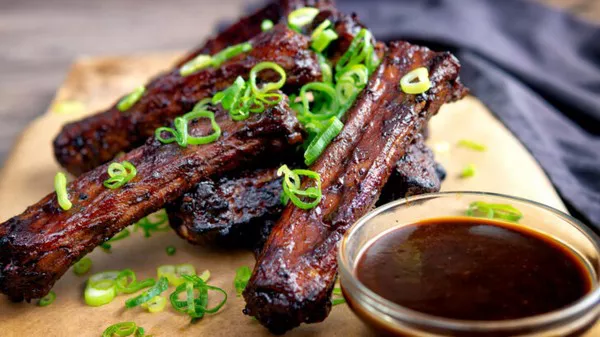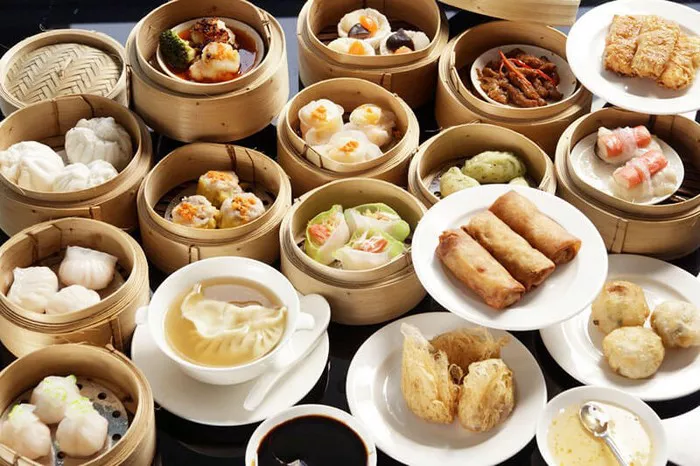Chinese cuisine is beloved worldwide for its rich flavors, diverse ingredients, and cultural significance. However, there are often misconceptions about the healthiness of Chinese food, influenced by varying preparation methods, regional differences, and popular dishes. In this comprehensive guide, we’ll delve into the nutritional aspects of Chinese food, explore its health benefits, discuss potential concerns, and provide practical tips for making healthier choices when enjoying Chinese cuisine.
Understanding Chinese Cuisine
Diversity and Regional Variations
Chinese cuisine is incredibly diverse, with regional variations that reflect different climates, ingredients, and cooking techniques:
1. Culinary Regions: Major culinary regions include Sichuan, Cantonese, Shandong, and Hunan, each known for distinct flavors and ingredients.
2. Cooking Methods: Steaming, stir-frying, braising, and deep-frying are common cooking techniques used across China.
3. Ingredients: Chinese cuisine emphasizes fresh vegetables, lean proteins (such as chicken, fish, and tofu), rice, noodles, and a variety of herbs and spices.
Key Components of Chinese Food
1. Staple Foods: Rice and noodles are staple foods in Chinese cuisine, providing energy and essential nutrients.
2. Vegetables: Chinese dishes often feature a variety of vegetables, contributing to fiber intake and micronutrients.
3. Proteins: Lean proteins like chicken, fish, tofu, and pork are commonly used, offering essential amino acids.
4. Herbs and Spices: Ingredients like ginger, garlic, soy sauce, and Sichuan peppercorns add flavor and potential health benefits.
The Health Benefits of Chinese Food
Nutrient-Rich Ingredients
Chinese cuisine incorporates many nutrient-rich ingredients that contribute to overall health:
1. Vegetables: Stir-fried or steamed vegetables retain their vitamins, minerals, and fiber content, promoting digestive health and providing antioxidants.
2. Lean Proteins: Chicken, fish, and tofu are sources of high-quality protein, essential for muscle maintenance and overall bodily function.
3. Herbs and Spices: Garlic, ginger, and chili peppers not only enhance flavor but also have potential health benefits, including anti-inflammatory properties.
Balanced and Varied Meals
Chinese meals typically emphasize a balance of flavors and textures, encouraging moderation and variety:
1. Portion Control: Dishes are often served family-style, promoting sharing and moderation in portion sizes.
2. Rice and Noodles: These staples provide energy and can be balanced with vegetables and proteins for a satisfying meal.
3. Tea Culture: Chinese tea, such as green tea or oolong tea, is often served with meals and is rich in antioxidants.
Common Misconceptions About Chinese Food
High Sodium Content
One common concern about Chinese food is its perceived high sodium content:
1. Soy Sauce: Often used in cooking, soy sauce can be high in sodium. However, reduced-sodium options are available, and its use can be moderated.
2. MSG: Monosodium glutamate (MSG) is a flavor enhancer sometimes used in Chinese cooking. Contrary to popular belief, MSG is generally recognized as safe by health authorities when consumed in moderate amounts.
Deep-Fried Dishes
Some Chinese dishes are deep-fried, which can contribute to higher calorie and fat content:
Moderation: Enjoy deep-fried dishes in moderation. Opt for stir-fried, steamed, or braised dishes more often.
Sugar Content
Sweet and sour sauces and some desserts can be high in sugar:
Balance: Choose dishes with lighter sauces or ask for sauces on the side to control sugar intake. Fresh fruits can be a healthier dessert option.
Tips for Making Healthier Choices
1. Choose Steamed, Stir-Fried, or Braised Dishes
Opt for dishes that are steamed, stir-fried with minimal oil, or braised with flavorful sauces:
- Steamed Dumplings: Enjoy steamed dumplings filled with vegetables or lean proteins.
- Stir-Fried Vegetables: Choose dishes like broccoli with garlic sauce or mixed vegetables stir-fry.
- Braised Dishes: Try dishes like braised tofu with mushrooms or braised fish in light soy sauce.
2. Watch Portion Sizes
Chinese meals are often served family-style, so practice portion control to avoid overeating:
- Share Dishes: Share entrees and sides with dining companions to enjoy a variety of flavors without consuming too much.
- Start with Soup or Appetizers: Begin with a small bowl of hot and sour soup or a vegetable spring roll as a starter.
3. Balance Carbohydrates with Proteins and Vegetables
Balance rice or noodles with lean proteins and vegetables to create a satisfying and nutritious meal:
- Brown Rice: Opt for brown rice instead of white rice for added fiber and nutrients.
- Protein Choices: Choose steamed chicken with vegetables or tofu with black bean sauce for a balanced meal.
SEE ALSO: How to Make Chicken Feet Soft
4. Choose Healthier Cooking Methods
Request dishes to be prepared with less oil or ask for sauces on the side to control fat intake:
- Ask for Less Oil: Request stir-fried dishes with less oil or oil on the side.
- Avoid Deep-Fried Foods: Limit deep-fried foods like egg rolls or sesame chicken.
5. Enjoy Chinese Tea
Embrace Chinese tea culture by enjoying a cup of green tea or oolong tea with your meal:
- Health Benefits: Chinese teas are rich in antioxidants and can aid in digestion and overall well-being.
6. Be Mindful of Sauces and Condiments
Some sauces and condiments can add extra calories, sodium, or sugar:
- Use Sparingly: Use soy sauce, hoisin sauce, or sweet and sour sauce sparingly or ask for them on the side.
Conclusion
Chinese food offers a wide range of flavors, textures, and nutritional benefits that can be enjoyed as part of a balanced diet. By making informed choices, such as selecting steamed or stir-fried dishes, controlling portion sizes, and enjoying Chinese tea, you can savor the deliciousness of Chinese cuisine while maintaining a healthy lifestyle. Understanding regional variations, cooking methods, and ingredient choices allows you to appreciate the diversity of Chinese food and its potential contributions to your overall well-being. With these insights and practical tips, you can confidently enjoy Chinese food as a flavorful and nutritious addition to your dining experiences.
Related Topics:



























